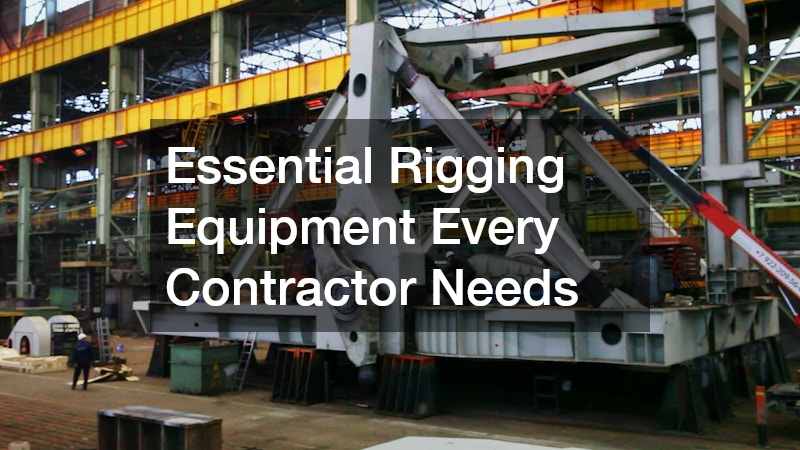
Rigging is an integral part of the construction and industrial sectors, providing the necessary tools and systems for lifting and moving heavy loads safely and efficiently. Whether it's a construction site, a manufacturing plant, or an event setup, proper rigging equipment ensures that jobs are completed effectively while minimizing the risk of injury or accident. In this article, we'll explore the essential rigging equipment every contractor needs, highlighting the key pieces that contribute to successful and safe operations.
Video Source
Wire rope slings are one of the versatile lifelines in rigging operations. These durable and flexible pieces of equipment are often favored for their strength and ability to bear significant loads. The construction of wire rope slings typically involves several strands of metal wire twisted together, which provides both strength and flexibility. Contractors value wire rope slings for their resistance to abrasions and the elements, making them suitable for rugged environments. Furthermore, they can be configured into different hitch types, such as vertical, choker, and basket, to accommodate various lifting scenarios.
In terms of safety and practicality, wire rope slings are unmatched for handling heavy, awkward-shaped loads. They are available in different configurations, such as single, multi-leg assemblies, and endless loops, making them adaptable to different job requirements. Wire rope slings are essential when lifting machinery, heavy construction materials, or even large pre-fabricated components. To ensure the longevity and safety of wire rope slings, regular inspections and maintenance are crucial. Any signs of wear, such as kinks or broken wires, necessitate immediate attention and replacement to prevent potential failure during use.
Shackles are a fundamental component in rigging equipment, acting as the primary connector between different rigging gear and the load being lifted. They come in various shapes and sizes, including anchor and chain types, each designed to withstand different loads and stress levels. Shackles are typically made from heavy-duty materials like alloy steel, which provides the necessary strength to handle substantial weights. Their design ensures easy assembly and disassembly, allowing for quick adjustments on the job site. Shackles must meet rigorous safety standards to ensure they do not fail under pressure, a crucial consideration for safe rigging operations.
In practice, shackles connect lifting slings, chains, or ropes to the load or lifting device. Due to their pivotal role in holding the load fast, the quality and condition of shackles directly affect operational safety. Inspections should be routinely performed to detect any wear, deformation, or corrosion that might compromise their integrity. Furthermore, it's crucial to ensure shackles are correctly sized; overloading a shackle can result in catastrophic failure. Proper torque on shackle pins must be applied to prevent them from loosening under operational vibrations.
Chain hoists are vital in providing the mechanical advantage needed to lift heavy loads with minimal exertion. These devices leverage a system of gears and chains, allowing a single operator to lift weights that would otherwise require multiple workers or heavy machinery. Chain hoists are especially valuable on job sites where space is limited and maneuverability is paramount. Made with robust materials like steel, these hoists can endure harsh environments and extensive use without compromising safety. Contractors value chain hoists for their reliability and ease of use, making them a staple in rigging equipment inventories.
The selection of chain hoists should be based on load capacity, lift distance, and applicable working conditions. A well-maintained chain hoist ensures smooth operation, minimizing the risk of accidents due to equipment failure. Regular cleaning and lubrication of components, like load chains and hooks, are essential practices to maintain their functionality and lifespan. Moreover, chain hoists should be inspected for signs of wear or damage, such as broken chain links or distorted hooks. Any defects in the hoist's operation may necessitate immediate repair or replacement to maintain workplace safety and efficiency.
Overall, chain hoists prove indispensable for contractors looking to enhance their lifting capability and improve site safety. These tools not only reduce the physical strain on workers but also enable more precise control over heavy load displacements. By investing in quality chain hoists and maintaining them adequately, contractors can achieve greater productivity and efficiency. Rigging equipment, including chain hoists, is an essential component of every contractor's toolkit. Ensuring their proper use and upkeep is key to safe and successful lifting operations across varied job sites.
